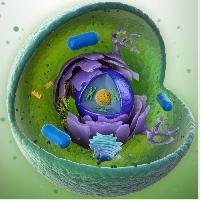Subcellular Proteomics Research
Subcellular proteomics refers to the targeted study of the proteomes within specific cellular regions such as the cell membrane, mitochondria, Golgi apparatus, or nucleus. Biotech company Biotyper offers mass spectrometry-based subcellular proteomics analysis services.
Subcellular Proteomics
Subcellular proteomics refers to the study of proteomes within different structural and functional units inside cells. Compared to whole-cell proteomics (involving 12,000-40,000 proteins), current proteomics analysis techniques and tools are suitable for analyzing subcellular proteomes (involving 500-4,000 proteins). Subcellular refers to organelles or cellular regions, including the cell membrane, cytoplasm, mitochondria, lysosomes, peroxisomes, endoplasmic reticulum, Golgi apparatus, and nucleus. The significance of subcellular proteomics research lies in its ability to enrich low-abundance proteins, complement the whole-cell proteome, provide subcellular localization information of proteins, and deepen the understanding of cellular molecular mechanisms.

Subcellular Proteomics z
Subcellular Proteomics Sample Requirements
In proteomics research, the sample preparation method varies depending on the sample type, experimental objectives, and analysis methods. In subcellular proteomics research, effective pretreatment of samples and obtaining high-purity subcellular components are key to sample preparation. Especially when using mass spectrometry for protein analysis later, it is crucial to ensure the purity of proteins in the subcellular proteomics sample to avoid interference from other subcellular proteins outside the research target, as the high sensitivity of mass spectrometry can affect the accuracy of analysis results. Different subcellular proteomes require corresponding methods for protein separation and extraction. For example, biotin labeling is a method used in subcellular proteomics to separate high-purity membrane proteins in cell membrane proteomics.
Related Services
Subcellular Proteomics Analysis
Post-translational Modification Proteome Analysis
Mass Spectrometry-based Sequence Analysis
How to order?





